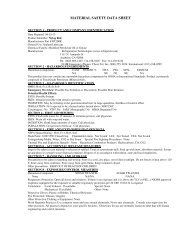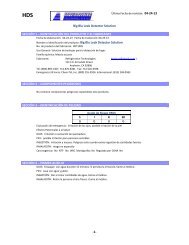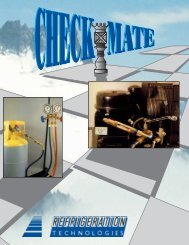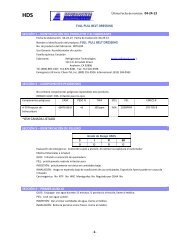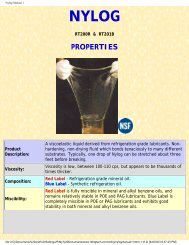Balancing of a Water and Air System (PDF
Balancing of a Water and Air System (PDF
Balancing of a Water and Air System (PDF
Create successful ePaper yourself
Turn your PDF publications into a flip-book with our unique Google optimized e-Paper software.
15<br />
15<br />
Example 3: Find the nearest st<strong>and</strong>ard size round duct to h<strong>and</strong>le 4600 cfm at a velocity <strong>of</strong><br />
1000 fpm.<br />
Solution<br />
Area <strong>of</strong> the duct in ft² is equal to: <strong>Air</strong>flow cfm / Velocity fpm<br />
Food square to inch square is equal to: ft² X 144 = in²<br />
In² to duct radius is equal to: √ square root <strong>of</strong>; area in² / ∏ (3.14)<br />
Radius to diameter is equal to: radius X 2 = diameter<br />
4600 cfm / 1000 fpm = 4.6 ft²<br />
4.6 ft² X 144 = 662.4 in²<br />
662.4 in² / 3.14 ∏ = 210.95<br />
Duct Flow<br />
√ <strong>of</strong> 210.95 = 14.52<br />
14.52 X 2 = 29.05<br />
29.05” diameter <strong>of</strong> a duct for 4600 cfm at 1000 fpm<br />
The preferred method <strong>of</strong> measuring duct volumetric flow is the pitot-tube traverse<br />
average. The maximum straight run should be obtained before <strong>and</strong> after the traverse<br />
station. To obtain the best duct velocity pr<strong>of</strong>ile, measuring points should be located as<br />
shown in Chapter 14 <strong>of</strong> the 2001 ASHRAE H<strong>and</strong>book—Fundamentals <strong>and</strong> ASHRAE<br />
St<strong>and</strong>ard 111. When using factory-fabricated volume-measuring stations, the<br />
measurements should be checked against a pitot-tube traverse.<br />
Power input to a fan’s driver should be used as only a guide to indicate its delivery; it<br />
may also be used to verify performance determined by a reliable method (e.g., pitot-tube<br />
traverse <strong>of</strong> system’s main) that considers possible system effects. For some fans, the<br />
flow rate is not proportional to the power needed to drive them. In some cases, as with<br />
forward-curved-blade fans, the same power is required for two or more flow rates. The<br />
backward-curved-blade centrifugal fan is the only type with a flow rate that varies directly<br />
with the power input.<br />
Pitot Tube Traverses<br />
Procedures<br />
• To accomplish repeatable traverse measurements, take the measurements in a<br />
specific, measured pattern, as indicated in 3.2. below.<br />
• Duct size must not change in a traversed section.<br />
• Face the Pitot tube into the air stream, parallel to the ductwork at each measurement<br />
point, <strong>and</strong> measure the velocity.<br />
• Convert velocity pressure to fpm velocity before averaging if the traverse is taken at<br />
other than st<strong>and</strong>ard conditions.<br />
• Take traverse measurements at actual conditions <strong>and</strong> actual cubic feet per minute<br />
[Actual CFM]. Correct Actual CFM to st<strong>and</strong>ard CFM [St<strong>and</strong>ard CFM] when specified by<br />
15




